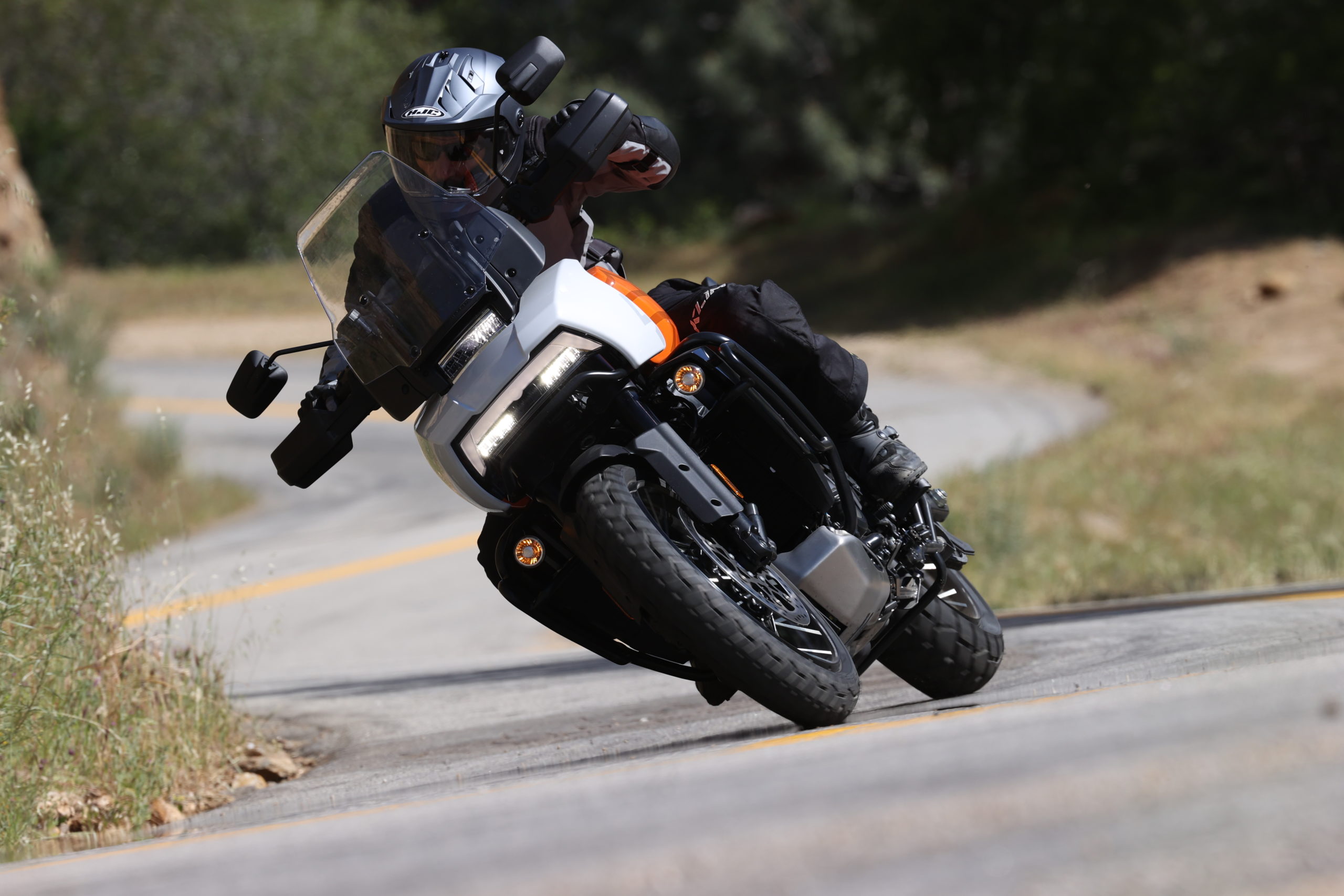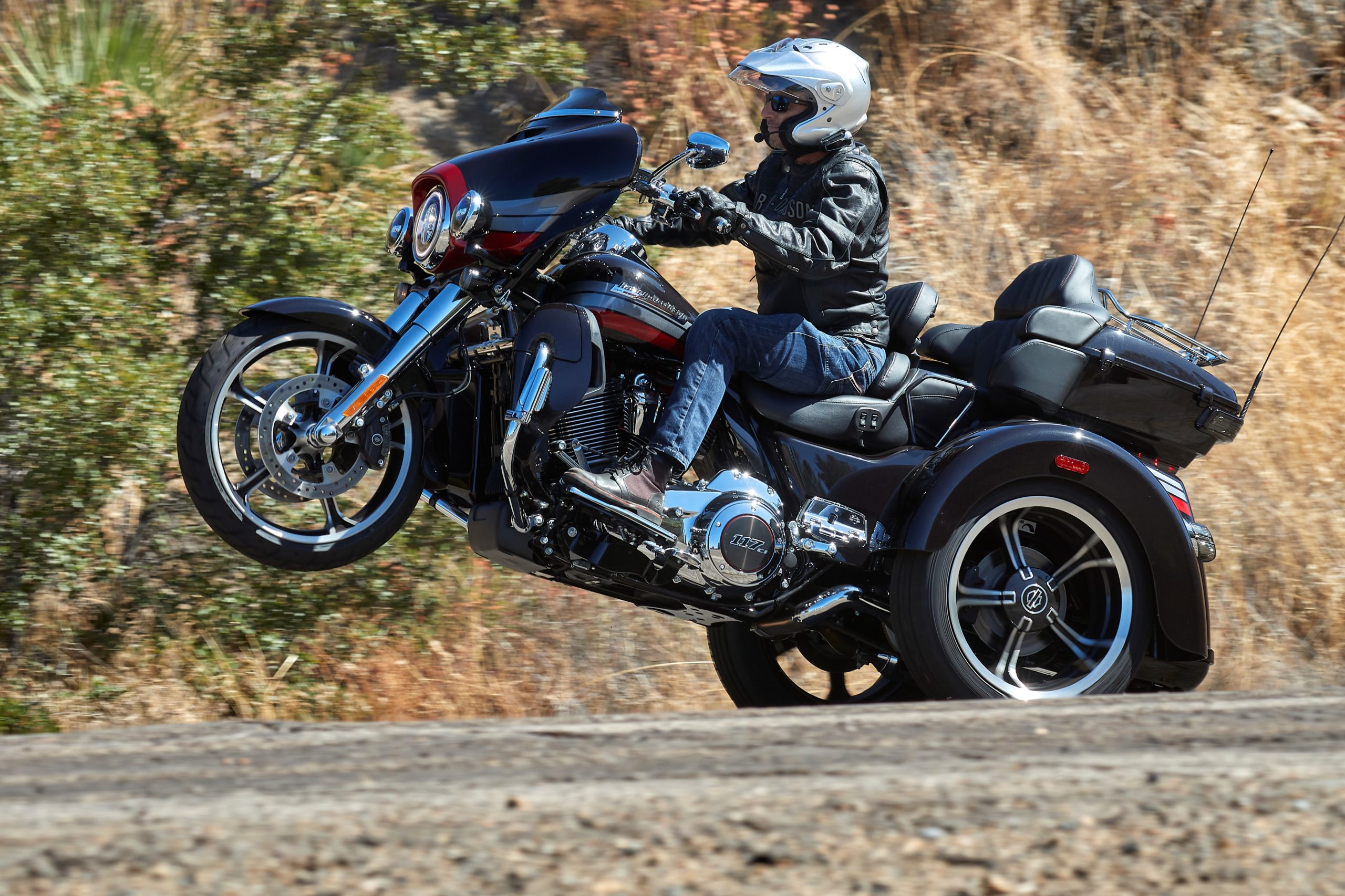“Summertime.” That’s a magical word for a motorcyclist; one that’s synonymous with the equally magical “road trip.” It’s a word that conjures up memories of carefree days in the wind; long days of capering giddily across the landscape from roadhouse to roadhouse (still another magical word), working on your raccoon tan and playing catch-me-if-you-can with storm cells rampaging like Comanches across the troposphere with evil intent and ultimately catching you out in the open with homicidal fury. Ah, summertime… Sigh.
That’s the magic of summertime. And it’s all so intoxicating that it’s easy to forget that summertime is also a magical word for highway construction contractors, and thus is also synonymous with signs reading “Road Work Ahead,” “Prepare to Stop,” “Flagger Ahead,” and the dreaded “Expect Delays”—and that last one is all too often synonymous with “Hope You Didn’t Have to Be Somewhere, Pilgrim.”
T’was ever thus, and the prospect of the occasional delay and tedious stretches of scarified pavement, loose gravel or fresh asphalt slinging up and sticking to every surface of your bike was just something to be accepted as part of the summertime deal; a minor and sporadic annoyance quickly repressed in the memory of an otherwise halcyon season of touring.
This year, though, the annoyance promises to be anything but minor and sporadic. It’s shaping up to be a real humdinger of a road work season after a long spell of governments having no money to fix stuff, and the sudden infusion of stimulus funds that has sent every road construction crew in all creation scurrying out to restore our once-vaunted highway system to some semblance of its former glory—or at least make it something less of the embarrassment it’s become. In California alone, there are 450 such projects underway. Last year at this time there were all of nine. Nationwide that number is 10,700 and involves nearly 30,000 miles of roadway.
I got my first taste of what that’s likely to look like when I rode up to Lake Tahoe last week, taking my customary blue highway route from Sonoma County up over Lake County and across the valley to the Sierras on Highway 20. A short stint on the battered remnants of I-80 over Donner Pass and a run down Highway 267 brought me to the north shore of the lake. That’s a journey of about 230 miles, most of it twisty and arrestingly scenic, and in the past it would take me a leisurely five hours to perform. This time it took six and a half.
I hadn’t traveled a dozen miles before I hit the first major construction zone on Highway 128. It hadn’t been there a week before, but it looks like it’s going to be with us for a long time judging by the fact that there was no flagger. Instead, they’d actually installed traffic lights at either end of the zone. That was the first of five traffic-controlled construction areas I endured that day.
Rather than despair and curse my fate, however, I put my time to good use, using those untimely stops and interminable waits to practice the road work delay routine I’ve developed over the years and will doubtless be calling upon frequently in the months ahead. It goes like this:
I roll to a stop at the back of the gathering line of vehicles, which for some reason always seems to find me away from any shade and directly in the broiling summer sun. I sit and idle impatiently for a few minutes thinking wishfully that the line will start moving soon, and when it doesn’t I switch off the ignition. More minutes pass in place and I unzip my jacket and open all vents to let the gathering steam within escape and wait some more. A few more minutes and the gloves come off and then the helmet. After about 20 minutes as the hyperthermic delirium sets in, I remove my jacket completely, along with my boots and jeans, and I start staggering up and down the line of vehicles in my underwear bothering motorists for water and sunscreen. It’s an entertaining way to pass the time and I recommend it.
There’s an obvious silver lining to all of this aggravation, however, and it’s that it may well bring the extinction of the evil tar snakes that have infested our highways in recent years. You’re familiar with this species. They’re the squiggles of diabolical “bituminous rubberized asphalt sealant” that have been laid all over the damn place by repair crews in lieu of actually fixing the damn road. And they’re notorious biker booby traps, providing on a hot day a level of traction equivalent to a slick of bacon grease on a dance floor, and pretty much every rider who’s encountered them has a horror story or two to tell about the experience.
My most recent horror story occurred while returning from Lake Tahoe, when, after a particularly grueling delay at a construction zone on Highway 20, I pulled into a rest area to put my pants back on. And as I angled into the parking area, the Electra Glide foundered like it had hit a puddle of WD40 and tried to skate out from under me. I stabbed a boot at the ground and managed to recover, but I was shaken. After parking the bike I walked back to see what the hell had just happened and discovered the mother of all tar snakes—a three-foot wide strip of rubberized sealant that some genius had spread to try to hold the crumbling tarmac together. I was impressed. This was truly the most magnificent specimen of the species I had ever beheld—but, thankfully, one whose days may finally be numbered.
It’s all right here in the diaries.


















